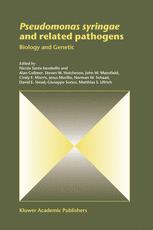

Most ebook files are in PDF format, so you can easily read them using various software such as Foxit Reader or directly on the Google Chrome browser.
Some ebook files are released by publishers in other formats such as .awz, .mobi, .epub, .fb2, etc. You may need to install specific software to read these formats on mobile/PC, such as Calibre.
Please read the tutorial at this link: https://ebookbell.com/faq
We offer FREE conversion to the popular formats you request; however, this may take some time. Therefore, right after payment, please email us, and we will try to provide the service as quickly as possible.
For some exceptional file formats or broken links (if any), please refrain from opening any disputes. Instead, email us first, and we will try to assist within a maximum of 6 hours.
EbookBell Team

4.8
64 reviewsThis volume mainly reports on new and recent advancements on different aspects of Pseudomonas syringae, a plant pathogenic bacterial species that include a high number of pathogens of important crops, which is an interesting model organism in plant pathology. In addition some related fluorescent Pseudomonas spp., responsible of new and emerging diseases, as well as some pathogens previously included in the above genus and now classified in the genera Ralstonia, Acidovorax are also considered. The tremendous recent advancements on: the ecology and epidemiology and, in particular, the adaptation of P. syringae to stresses and adverse environmental conditions; the function and regulation of genes involved in the production of phytotoxins and on their mechanism of action in the interaction with the host cells; the structure, function and regulation of type three secretion system (TTSS) and the transport of the effectors proteins in the host cells; the possibility to control diseases through the induction of the systemic acquired resistance (SAR); the development of molecular techniques for the highly specific and sensible identification and detection of pathogens; the determination of the causal agents of new and emerging diseases as well the classification of the different pathovars of P. syringae; are reported in 76 chapters cured by leading scientist in the respective fields.